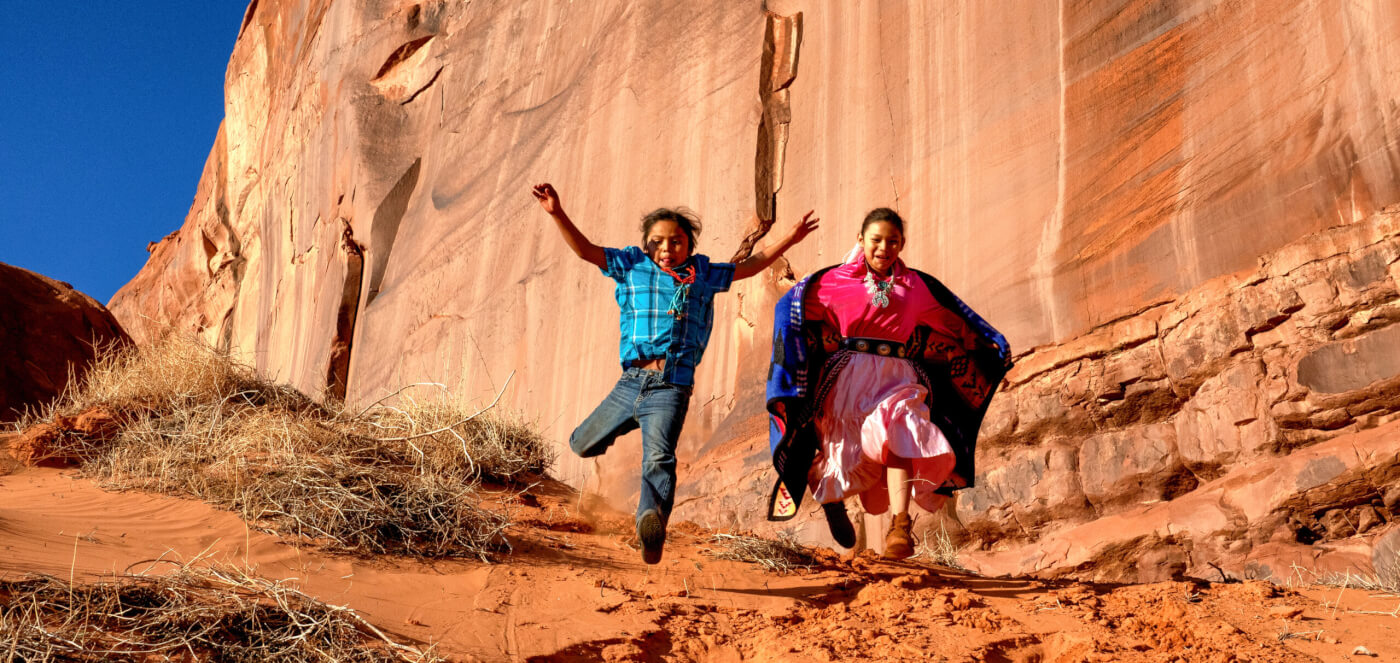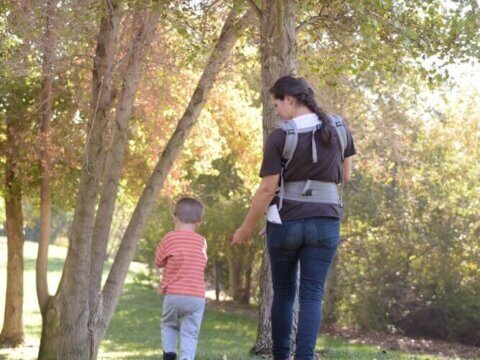A common thread: Indigenous-led foundation weaves together activism and art, climate and community
As a young girl in New York City, Alicia Fall recalls how she would find herself communing with trees lining her street, and the little bits of soil they stood on. “Mother [Earth] is speaking to us regularly. But we don’t hear anything if we‘re so nonstop busy. You’ve got to take that moment to stop and listen.”
Growing up, Fall’s mother, who is Eastern Band Tsalagi and Dutch, would remind her of the importance of her connection with nature, and with every other child of Mother Earth. “My mother spoke to me in such a way that the thread of my story connected me to nature. She planted a seed in me, and now I do that in my own work.”
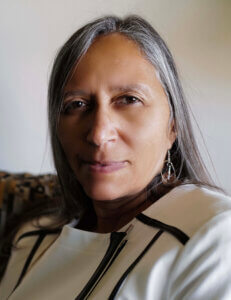
Alicia Fall
Today, Fall is an advocate for Indigenous voices, as well as the Founder and Vision Holder of the Indigenous-led Her Many Voices Foundation (HMVF). Their core value, “Whatever I do for another, I do for myself,” comes from Fall’s mother, and is the reason that she works so tirelessly to champion causes for Indigenous women and children, and Mother Earth.
This value has brought Fall to create HMVF, as well as speaking on the TEDx stage, serving on the boards of the Coalition Against Global Genocide and Tiyospaye Winyan Maka, and joining the Colorado Advisory Council for the Children & Nature Network’s 2023 Inside-Out International Conference.
As a member of the Colorado Advisory Council, Fall brings her expertise and lived experience to help guide the creation of an inclusive and culturally relevant conference. With Fall and Renée Chacon on the council, the Children & Nature Network conference planning team are integrating Indigenous voices in a meaningful way, right from the start and throughout the planning and execution of the event. The advisory council can serve as a model for other organizations who also believe in centering the experiences of communities that have historically been excluded from the outdoors, conservation and nature connection work. Such an example will help pave the way for others as organizations increasingly seek to include Native perspectives and causes in their work and everyday operations.
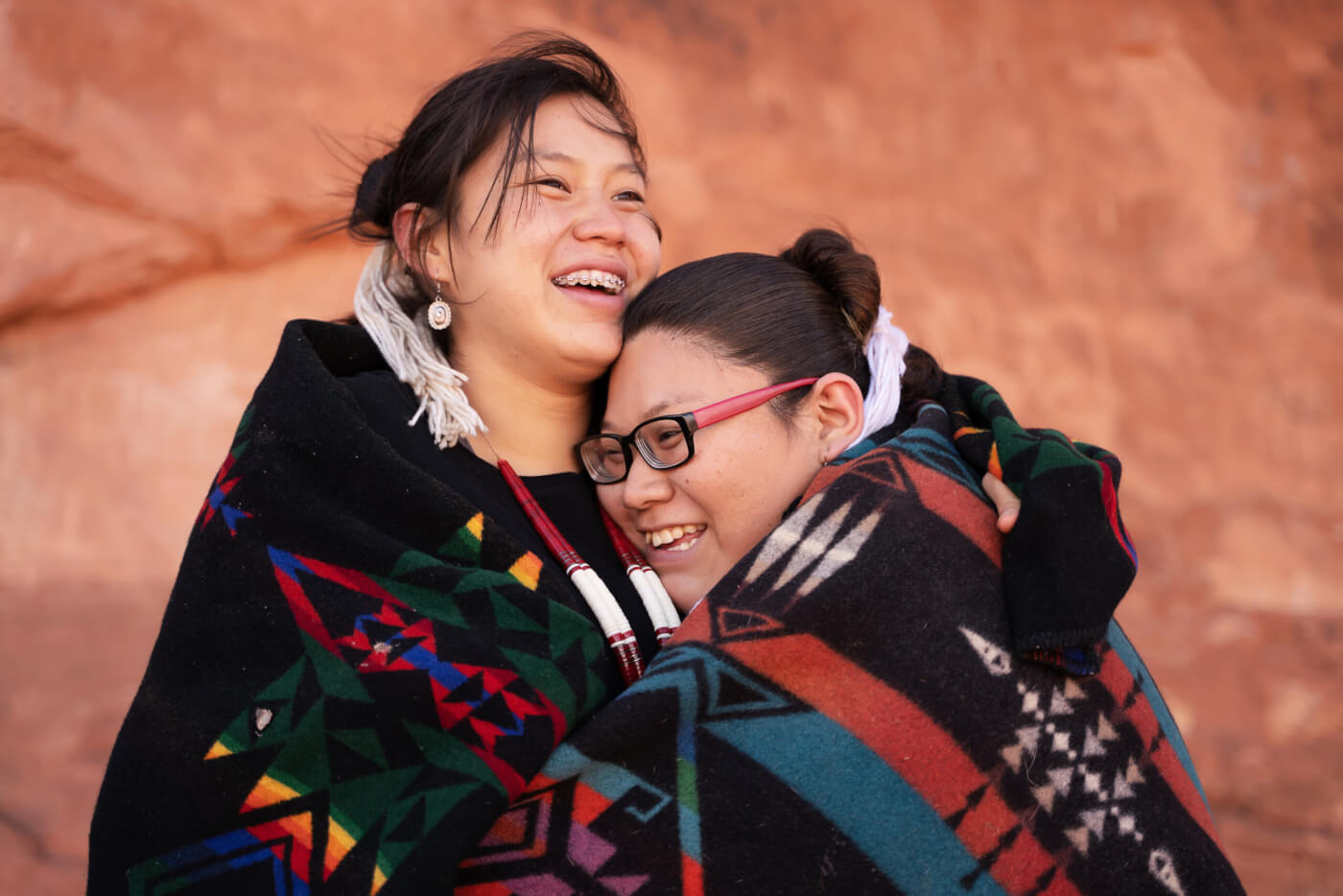
Navajo sisters enjoy the outdoors together.iStock.com/thepalmer
“Addressing Indigenous peoples seems to be the hot topic today,” Fall notes. “But, if you are recognizing that Indigenous peoples really are keeping that wisdom, where are the financial resources to back that up? Where is the land back acknowledgment, as opposed to just a land acknowledgment?”
The growing land back movement encourages returning stolen, unceded land to the Indigenous peoples who were forcibly removed from it, reestablishing decision-making and land management authority for the land’s traditional occupants. The concept of rematriation integrates these “land back” ideas into a move towards restoring the sacred relationships between Indigenous people and their ancestral land, with an emphasis on traditional matrilineal values, which are in opposition to modern patriarchal violence and oppression.
Within the spaces where Fall operates, she often encounters non-Indigenous people who have land and financial wealth. “They’re kind, they’re looking for Native wisdom. They’ll do the land acknowledgment and host gatherings on their land. And then it ends there,” Fall says. Instead, she suggests a more meaningful commitment: “Return some of that land to Indigenous peoples who will take care of the land — and you in the process.”
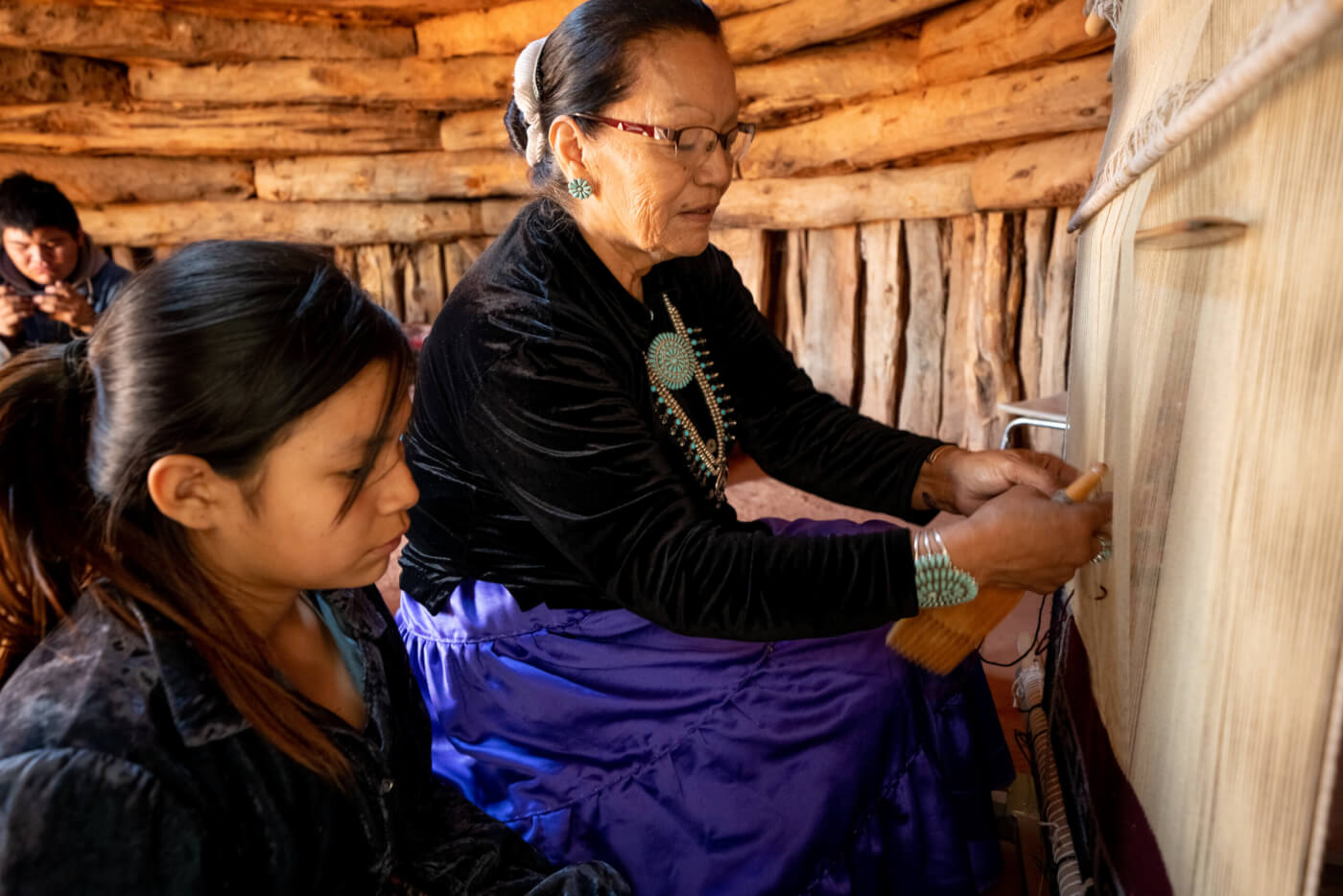
A Navajo grandmother teaches her granddaughter how to weave. iStock.com/grandriver
“We have a mindset of, ‘You cannot own Mother,’” Fall points out. “But it truly is an honor to care for Mother. When you’re a child, your mother nurtures you, brings you life, cares for you. And then we do the same in return.”
In that same way, Fall feels called to care for Mother Earth during a time when the planet needs it more than ever. As the climate crisis threatens the well-being of current and future generations, she sees this mentality as the only solution.
“We have to remind ourselves of how connected we are in order to change,” she says.
“It doesn’t matter if it’s someone on the other side of the pond, your child is my child. So you care for that child and provide for that child as much as my children. There’s no separation in that.” Whatever I do for another, I do for myself.
Community care is central to HMVF’s work. “Whenever people ask me what I do, I always say, I work for women, children and Mother Earth,” Fall explains. The foundation provides resources and practical education for women and children in underserved communities, predominantly in Indigenous communities. This manifests in a broad portfolio of projects and programs, the latest of which is seeking to build first-of-their-kind Hemp Education Cultural Center Longhouses.
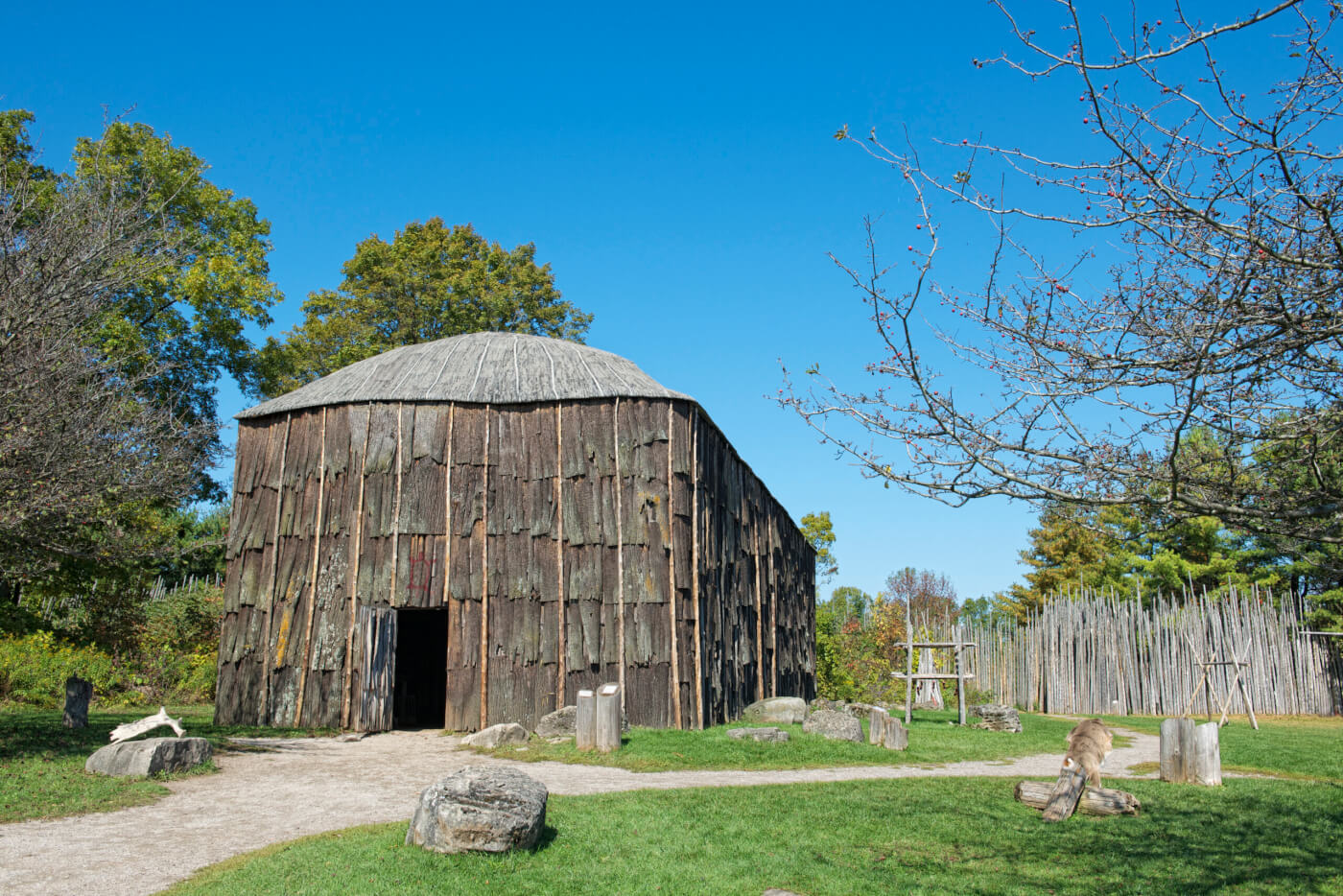
Longhouse in a prehistoric Iroquoian village located at the Crawford Lake Indian Village Site in Ontario, Canada.iStock.com/ihoe
“Every Indigenous group has their version of a longhouse. It is that cultural center, that community center… It’s where multiple families come, live together, take care of each other and [take care] of the land together,” Fall explains. Fall speaks of promoting green jobs and economic equity for Indigenous women while restoring broken ecosystems and reintegrating Native wisdom into caring for the land. It’s an exciting prospect — a harmonious solution that addresses both the hardships endured by today’s Indigenous women and the climate crisis whose effects are felt worldwide. All HMVF needs to do is find the right piece of land.
Here’s where Fall invites non-Indigenous people to consider their impact. “The majority of Indigenous people cannot afford to purchase back the land that has been stolen from them,” Fall points out. “In the nonprofit sector, out of 100% of monies that come, 0.5% go to organizations led by people of color, and only 0.2% goes to Indigenous peoples,” she says.
This gap in support represents a disconnect between the resources available to Indigenous people, and the results they’re expected to produce. According to HMVF, “Indigenous peoples are 4-5% of the world’s population and yet, we tend to do 80% of protecting Mother Earth.” Fall explains, “We’ve reached a pivotal point in the climate crisis. If you are wise enough to recognize that issue — then the next question you would ask is, who do we go to to help? And that’s where the Indigenous wisdom comes in.”
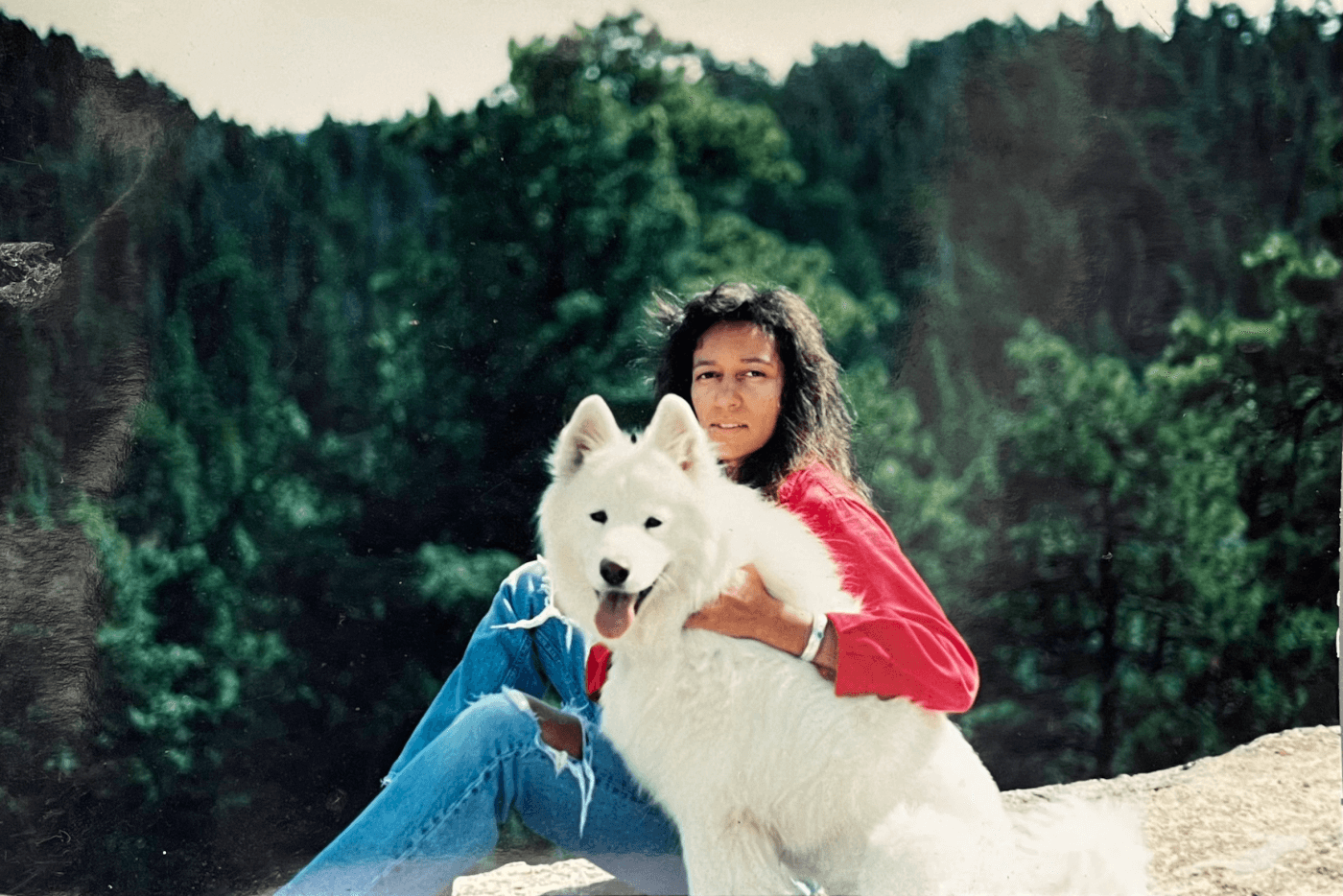
Alicia Fall in the mountains of Colorado as a young woman.
Again, Fall emphasizes the threads of connection, the mutuality and shared reliance that Indigenous cultures readily embrace. “Outside of Indigenous communities, we’ve come to a place where we seem above it all, and yet we’re drowning. It’s like an illness.
“It’s like we are all cells, we are all a part of the body. Every individual cell needs to do their part, and once one does not, then it becomes an issue. And when many do not, then truly there is a disease.
“Nothing will change unless we acknowledge that connection. I am you, you are me — we are no different from the trees, we are no different from the fish or the birds.”
In Fall’s eyes, all species, all members of the community that together comprise Earth, are children of Mother, and we are all siblings: trees, soil, humans, river, birds. This is the origin of the foundation’s name: ‘Her’ refers to Mother Earth, ‘Many Voices’ refers to all of her children.
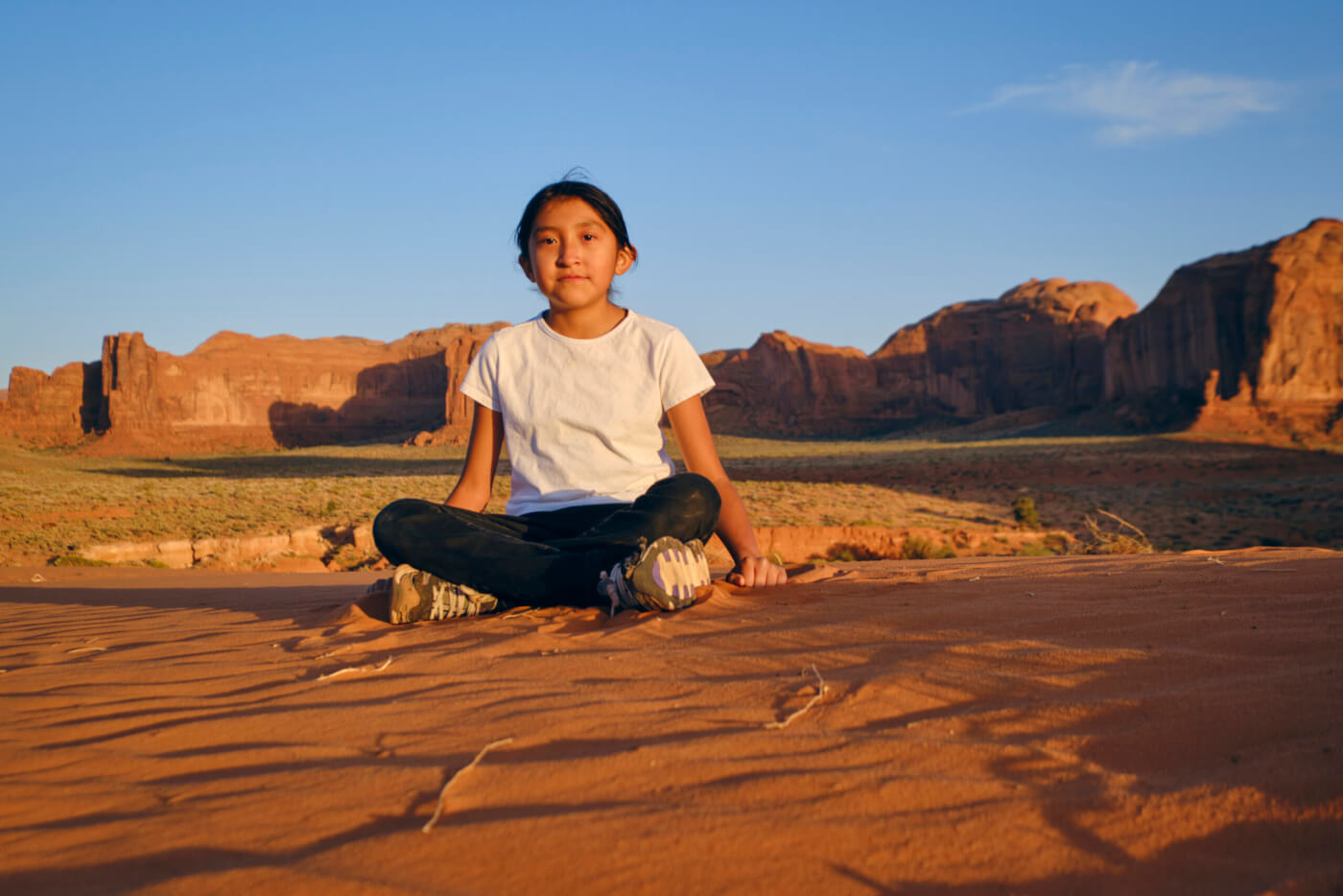
A young Navajo girl in Monument Valley, land of Hopi/Hopitutskwa, Navajo/Diné Bikéyah, Southern Paiute, Pueblos, and Ute peoples. iStock.com/RichLegg
Growing up, Fall spent a few weeks each summer in French Canada, where she didn’t speak the language. “It caused me to go even further into the embrace of Mother and of nature, because I could communicate with the trees, the soil and the river a lot easier than I could communicate with another child.”
Today, she spends most of her time in cities, bouncing between Denver, New York City, and Amsterdam. But she continues to be intentional about seeking out moments of nature connection throughout her day and surrounds herself with greenery at home. “It’s important to explain that to children — you can be in an apartment in the middle of Manhattan, and you can still connect with nature. And, here’s what happens when you put your hands in the soil to grow those tomatoes that are in the little containers on the balcony of your apartment.”
She proclaims, “The joy that you witness with children in any kind of nature is all you need to know and experience. We adults can learn a tremendous amount from that.”
- Her Many Voices Foundation
- Honoring Indigenous people and land, a collection of resources
- Learn more about rematriation and land back
- Moving beyond land acknowledgments training
- Research Digest: The healing power of nature for Indigenous children and youth
- Whose land are you on? Interactive Native land map and teacher’s guide
- Center for Native American Youth
- Gathering in gratitude, by Francis Mendoza
- Seeing our Native students: A guide for educators
-
Network News
Earth Day: Young leaders advocate for change
-
Feature
Nature photographer Dudley Edmondson has a vision for the representation of Black and Brown faces in the outdoors
-
Richard Louv
EARTH MONTH: You're part of the New Nature Movement if....
-
Voices
Placemaking: How to build kinship and inclusive park spaces for children with disabilities
-
Network News
Children & Nature Network founders release report on global factors influencing the children and nature movement


